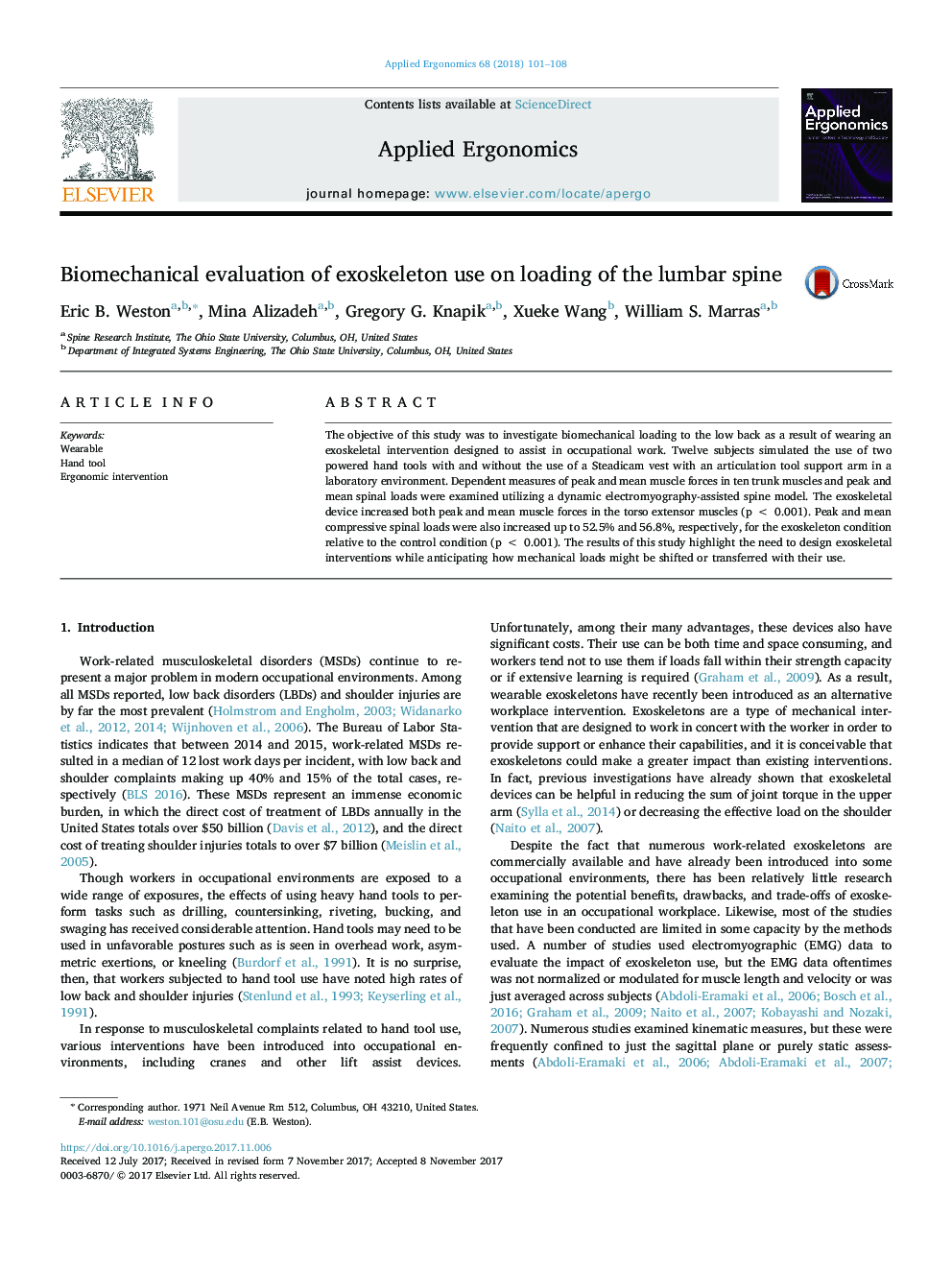| Article ID | Journal | Published Year | Pages | File Type |
|---|---|---|---|---|
| 6947671 | Applied Ergonomics | 2018 | 8 Pages |
Abstract
The objective of this study was to investigate biomechanical loading to the low back as a result of wearing an exoskeletal intervention designed to assist in occupational work. Twelve subjects simulated the use of two powered hand tools with and without the use of a Steadicam vest with an articulation tool support arm in a laboratory environment. Dependent measures of peak and mean muscle forces in ten trunk muscles and peak and mean spinal loads were examined utilizing a dynamic electromyography-assisted spine model. The exoskeletal device increased both peak and mean muscle forces in the torso extensor muscles (p < 0.001). Peak and mean compressive spinal loads were also increased up to 52.5% and 56.8%, respectively, for the exoskeleton condition relative to the control condition (p < 0.001). The results of this study highlight the need to design exoskeletal interventions while anticipating how mechanical loads might be shifted or transferred with their use.
Related Topics
Physical Sciences and Engineering
Computer Science
Human-Computer Interaction
Authors
Eric B. Weston, Mina Alizadeh, Gregory G. Knapik, Xueke Wang, William S. Marras,
